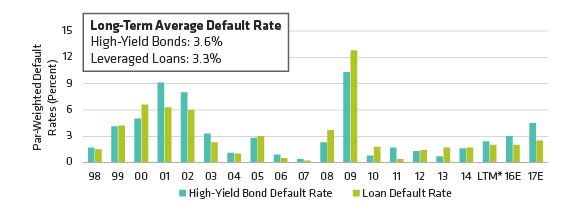-
The views expressed herein do not constitute research, investment advice or trade recommendations and do not necessarily represent the views of all AB portfolio-management teams.
Even As Defaults Rise, High Yield Should Stay Afloat
Jan 19, 2016
3 min read
High-Yield Defaults Likely To Rise Somewhat

As of November 30, 2015
*Last 12 months
Source: J.P. Morgan
Yield To Worst Generally Predicts Market Returns Over The Next Five Years
Yield to Worst and Five-Year Forward Annualized Return

Historical analysis does not guarantee future results.
As of December 31, 2015
High yield is represented by Barclays Global High Yield.
Source: Barclays, Bloomberg, Credit Suisse and AB
About the Author